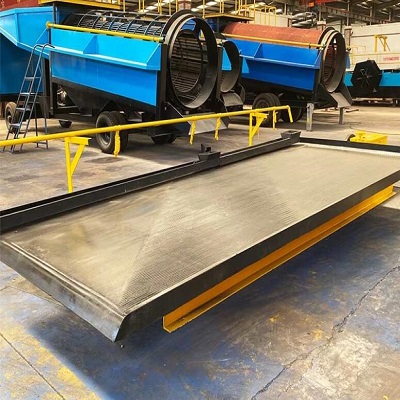Welcome to GoldMaster
Introduction of mineral processing methods
1. Gravity selection method
The gravitational separation method separates minerals according to the difference in relative density (usually called specific gravity) of minerals. Mineral particles with different densities are affected by fluid dynamics and various mechanical forces in the moving medium (water, air and heavy liquid), resulting in suitable loose layering and separation conditions, so that mineral particles with different densities are separated.
2. Flotation method
In the medium (mainly water) flow, the difference in the specific gravity of the mineral raw material particles is used for sorting. Such as jigging, shaking table, chute and so on. Gravity separation is the main beneficiation method for separating wolframite, cassiterite, gold placer, coarse-grained iron and manganese ore; it is also widely used in the separation of rare metal placer. Gravity separation is suitable for a wide range of particle sizes, from several hundred millimeters to less than one millimeter. The cost of beneficiation is low and there is little environmental pollution. If the mineral particle size is within the above range and the specific gravity differs greatly, gravity selection is the most suitable method. Sometimes, gravity separation (mainly heavy medium separation, jigging separation, etc.) can be used to pre-select part of the waste rock, and then use other methods to reduce the cost of beneficiation. With the increase of lean ore and fine mineral raw materials, gravity separation equipment tends to be large-scale and multi-layered, and compound motion equipment, such as centrifugal concentrators, shaking tables, vibrating chutes, etc., is used to improve the gravity separation efficiency of fine-grained materials. At present, gravity separation has been able to effectively select 20μm materials. Gravity election is the most important coal preparation method.
3. Magnetic separation method
Using the different magnetic properties of mineral particles, sorting is carried out in the inhomogeneous magnetic field. Strong magnetic minerals (magnetite and pyrrhotite, etc.) are separated by weak magnetic field magnetic separator; weak magnetic minerals (hematite, siderite, ilmenite, wolframite, etc.) are separated by high magnetic field magnetic separator Sorting. The weak magnetic field magnetic separator is mainly an open-circuit magnetic system, mostly composed of permanent magnets, and the high-field magnetic separator is a closed-circuit magnetic system, which mostly uses an electromagnetic magnetic system. Weak magnetic iron minerals can also be turned into strong magnetic minerals through magnetization roasting, and then separated by a weak magnetic field magnetic separator. The structure of the magnetic separator is drum type, belt type, rotary ring type, disc type, induction roll type and so on. The magnetic pulley is used for pre-selecting massive strong magnetic ore. The main development trend of magnetic separation is to solve the recovery problem of fine-grained weak magnetic minerals. In the 1960s, the wet strong magnetic separator with toothed plates and magnetic gathering media was invented, which promoted the collection of weak magnetic minerals. In the 1970s, the high-gradient magnetic separator with high magnetic field gradient and strength, which uses steel wool or steel mesh as the magnetic gathering medium, and the superconducting magnetic separator that uses low-temperature superconductors instead of normal-temperature conductors were invented, providing good conditions for the recovery of fine-grained weak magnetic minerals. Prospects.
4. Electric selection method
Using the difference in electrical properties of mineral particles, sorting is carried out in a high-voltage electric field. Mainly used for sorting conductors, semiconductors and non-conductor minerals. According to the electric field, electric separators can be divided into electrostatic separators, corona separators and composite electric field separators; according to the charging method of ore particles, they can be divided into contact electrification separators, corona electrification separators and friction electrification separators. Electric separators have a narrow particle size range, low processing capacity, and raw materials need to be dried, so the application is limited; but the cost is not high, the separation effect is good, and the pollution is less; it is mainly used for the selection of coarse concentrates, such as separation of white Tungsten ore, cassiterite, zircon, rutile, ilmenite, tantalum-niobium ore, monazite, etc. Electric separation is also used for grading and dust removal of mineral raw materials. The development trend of electric separation is to develop equipment with large processing capacity and high efficiency in separating fine-grained materials.
5. Selection
Including manual and mechanical picking. It is mainly used for pre-selecting and discarding waste rocks. Hand selection is based on the external characteristics of minerals, with manual selection. This ancient beneficiation method is still used in some mines. Mechanical sorting includes: ① light sorting, using the differences in the optical properties of minerals; ② X-ray sorting, using the characteristics of fluorescence under X-ray irradiation; ③ radiation sorting, using the natural radioactivity of uranium, thorium and other minerals. In the 1970s, electric sorting and magnetic sorting using mineral conductivity or magnetism began to appear.










